5 flowers to plant indoors now that will bloom in time for Christmas – and the 'indoor forcing' trick you need to know
Choose a selection of bulbs to grow indoors now and enjoy beautiful blooms and scent in time for Christmas (all you need do is trick them into thinking it's spring)
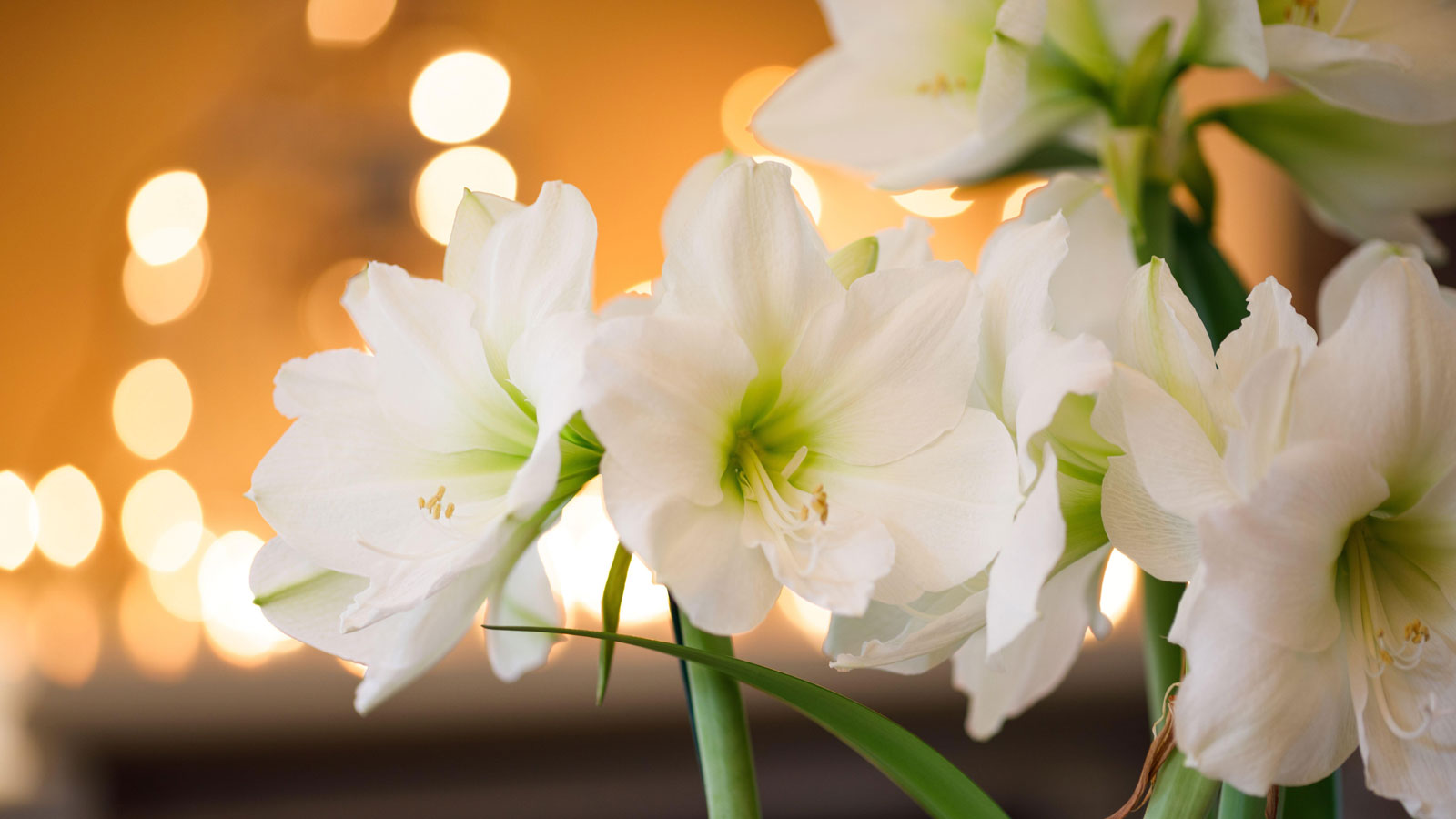
Fill your home with beautiful fresh flower displays and heavenly scent for Christmas by planting a selection of flowering bulbs indoors. The time to plant up indoor potted bulbs is now, as they start forming their roots early, and the bigger the root system, the more wonderful the blooms.
In fall, choose a selection of cold-hardy spring bulbs like narcissus and hyacinth to plant in pots indoors and they will bloom in winter. You can force any ordinary outdoor bulb to encourage them to flower much earlier, such as for Christmas, by potting them up and keeping them in a cool place for several weeks. Skip this step and they will simply bloom later in winter instead.
You can also buy pre-chilled bulbs especially grown for forcing such as delicate paperwhite narcissus and ‘prepared’ hyacinths. Forcing bulbs is a technique that tricks them into thinking it’s spring.
If you start this process now, this will give bulbs time to develop in time for the festive season. Now find out what makes it onto our shortlist of the best 5 flowers to plant now in your indoor garden to bloom in time for Christmas.
1. Amaryllis

The flamboyant blooms of amaryllis (also known as hippeastrum) make a strong statement as an indoor plant for Christmas decorating. They come in velvety shades of bold crimson, magenta pink and deep maroon, as well as crisp white. Ideally choose the largest bulbs you can find that are capable of producing two or three flower spikes so you get flowers for longer.
Pre-soak the bulbs for a couple of hours. Use bulb or multipurpose compost and a pot slightly larger than the bulb. Ensure that the top two-thirds of the bulb is above the surface of the compost, and dress with a layer of moss to add a natural touch. Water well and leave to drain.
Stand the pot in a bright, warm place, as amaryllis are tender bulbs that don't need a cold spell to trigger early blooms. Water sparingly until the new leaves develop, then more regularly once they do.
The Livingetc newsletters are your inside source for what’s shaping interiors now - and what’s next. Discover trend forecasts, smart style ideas, and curated shopping inspiration that brings design to life. Subscribe today and stay ahead of the curve.
You can expect to see flowers after six to ten weeks. Once your amaryllis is blooming feed it once a week with a liquid fertilizer. Turn the pot regularly to prevent the flower stalk leaning towards the light. Stake tall stems if necessary.
Bulbs can be kept and will reflower next year. Once the leaves have died down, do not feed or water your plant, and transfer it to a cool bright place. It will remain dormant from late summer to mid-fall.
2. Paperwhite Narcissus
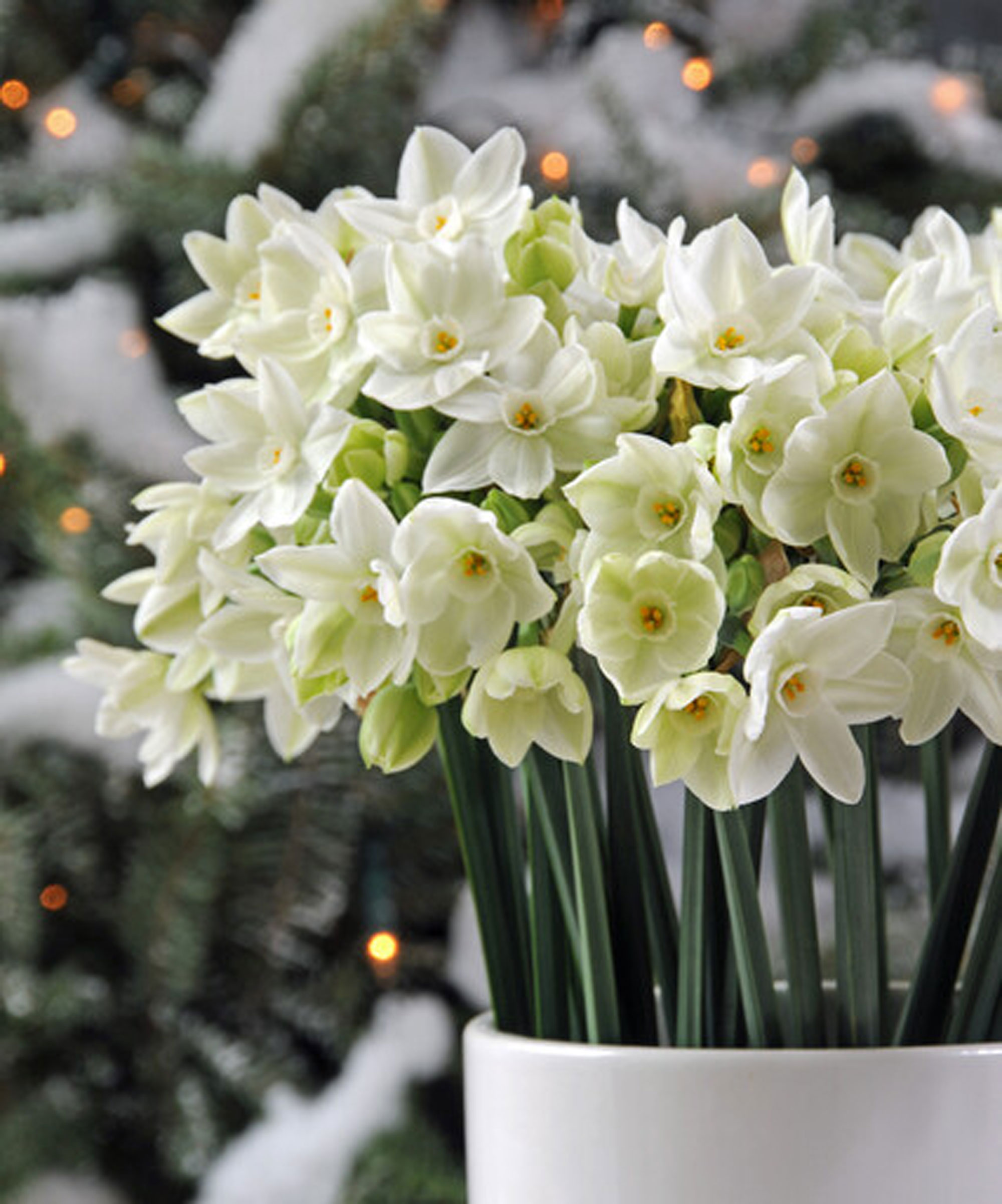
With their crisp white flowers and ability to drench the air with the most wonderful scent, it's no surprise that paperwhites are one of the most popular indoor bulbs. Traditional paperwhite narcissus varieties such as 'Ziva' are strongly scented and will fill your home with fragrance - they're a great plant choice for amazing smell homes. A great choice as a cut flower, they also work well as an indoor plant as they come out far earlier than the garden variety.
Part-fill a pot with Paperwhite bulbs, available from Amazon, or multipurpose compost, water well, then leave to drain. Next arrange the bulbs evenly on the soil surface with the pointed tips facing upwards. Add more compost until the bulbs are covered, including the growing tips.
Then transfer the pot to a cool, dark place. Monitor for the next 6-12 weeks, moving them to a warmer area as they begin to grow. As soon as the flowers emerge, water regularly so that the soil stays evenly moist. If you're planting several pots try bringing them out gradually so you get staggered growth.
After paperwhites finish blooming, toss the spent bulbs on the compost heap as they won't bloom again indoors.
3. Hyacinths
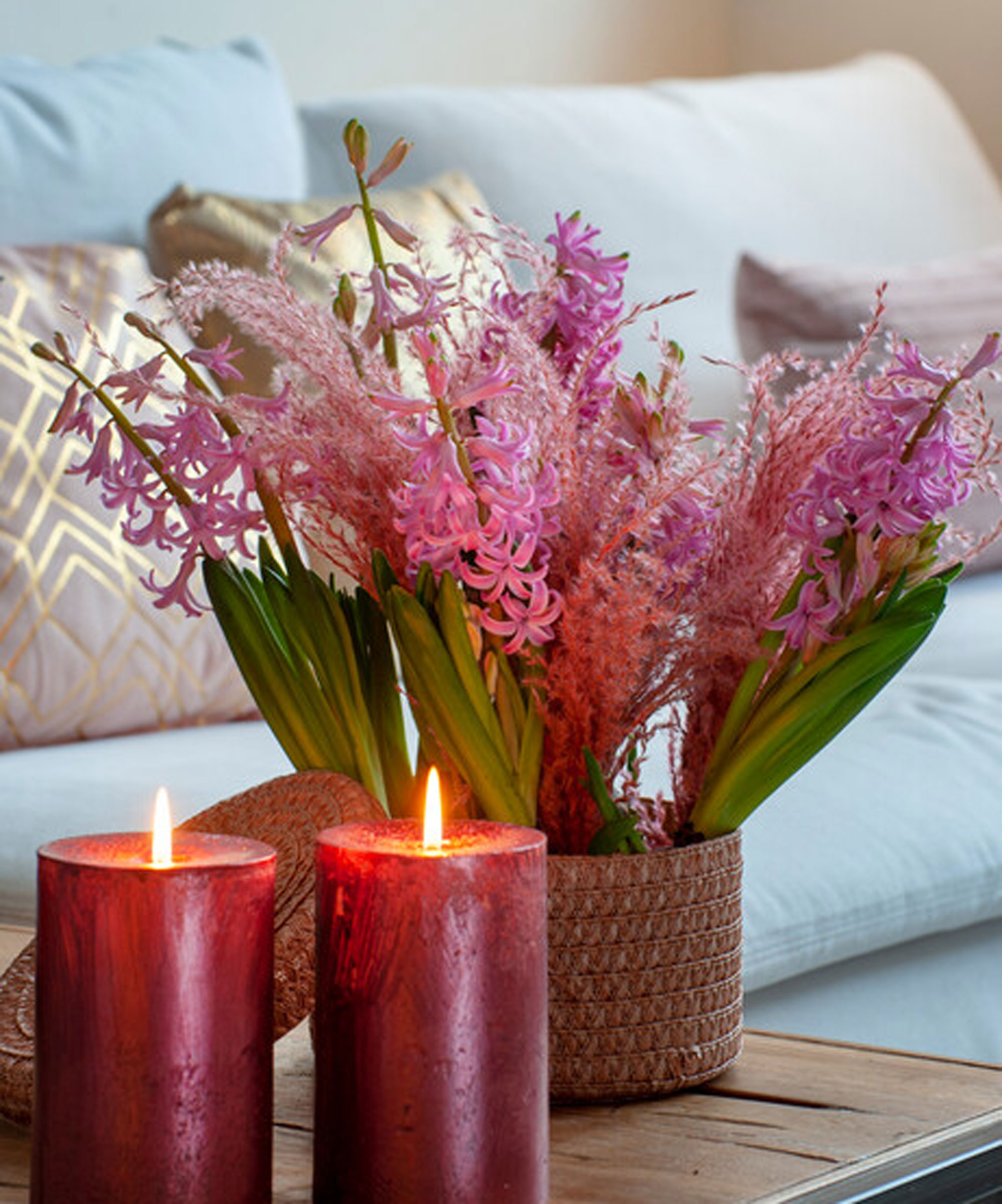
These make an elegant indoor arrangement and they will fill the room with their intoxicating scent for weeks. Choose prepared hyacinths such as ‘Pink Pearl’ if you want to have flowers in bloom for Christmas. Prepared hyacinths are bred to bloom much earlier and it’s this variety that is grown mainly as indoor plants.
It's a good ideas to wear gloves for potting as the bulbs can cause skin irritation. Part-fill a pot (or several pots) with bulb or multipurpose compost, water well, then leave to drain. Next arrange the bulbs evenly on the soil surface with the pointed tips facing upwards. Fill in around the bulbs with more compost but leaving the tips just showing above the surface.
Put the pot in a black plastic bag and transfer it to a cool, dark place. Check once a week for growth and water if the compost is dry. When you see shoots that are around 2 inches tall, which is generally about 6-10 weeks later, it's time to remove the black plastic bag and move the pot into the room where you want to enjoy it. Just make sure it's not in direct sunlight.
Once forced hyacinth bulbs have finished flowering they can be planted outside and they'll flower again every spring.
4. Miniature daffodils
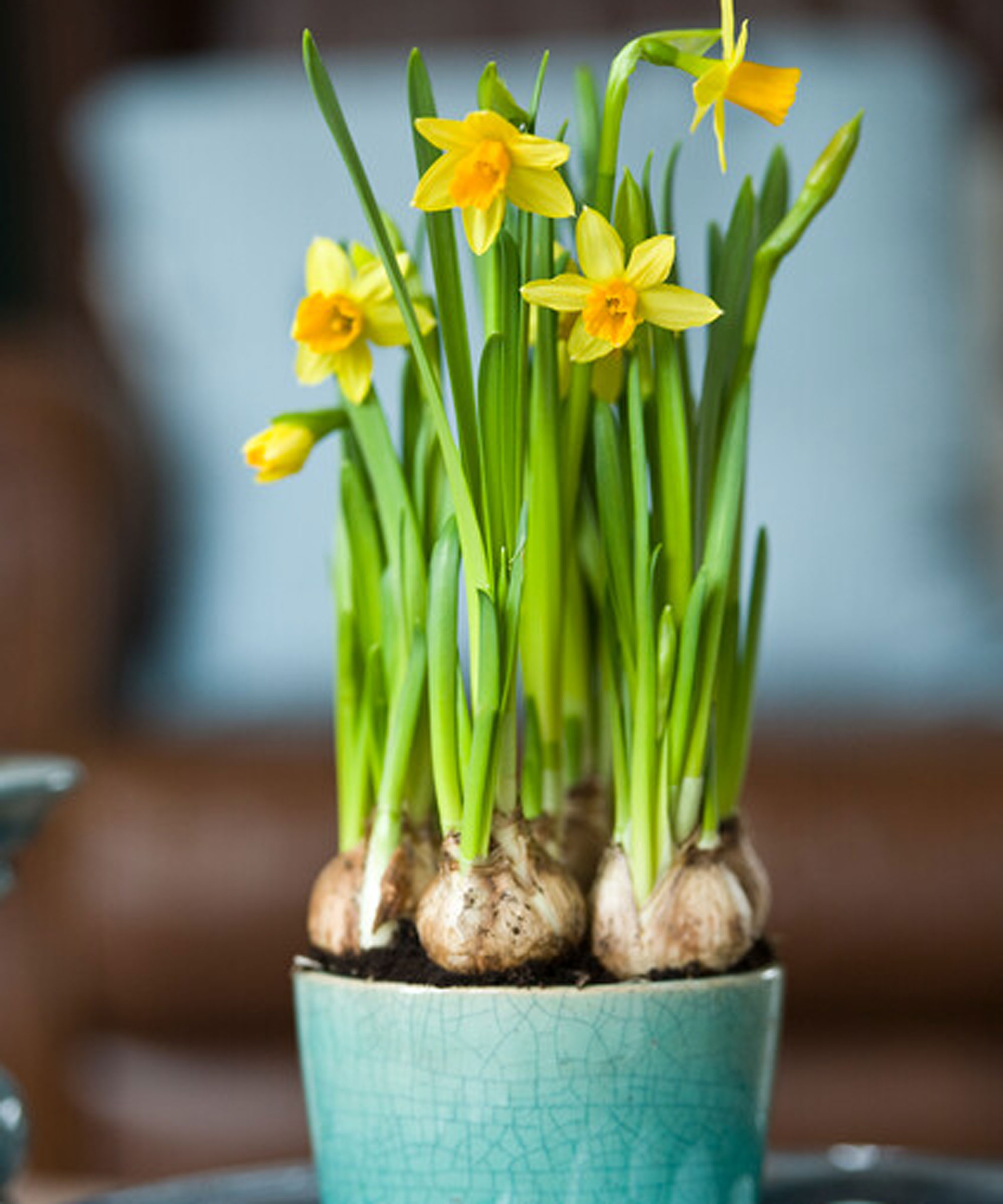
Indoor flowers tend to make a more attractive display when planted en masse and nothing beats containers packed with brightly colored daffodils. As a general rule aim for 3 to 5 bulbs in a 6-inch-diameter pot, and you can double the amount if you're using miniature daffodil varieties such as 'Tete-a-Tete' or 'Little Gem'.
Begin by part-filling a shallow container with your miniature daffodil bulbs, available from Amazon, or multipurpose compost. Arrange the daffodil bulbs on the soil surface. Once you have positioned the bulbs, add more compost around them but leave the bulb tops showing above the compost. Water each container thoroughly.
If you bought pre-chilled bulbs you can skip the next step but otherwise daffodils need a cold environment for 8-10 weeks. Move the pot to a cool dark location such as a basement or unheated garage. Keep the compost moist but not drenched.
When shoots reach about 2 inches, move the pot to a slightly warmer location with low light, then gradually move it towards a sunny spot - they're a great flower to grow on a windowsill. Turn the pot every day for even growth, and water as needed. Fertilizing is not necessary as bulbs have everything they need inside them to create lovely flowers.
Once the bulbs have finished flowering they can be planted out in the garden.
5. Muscari
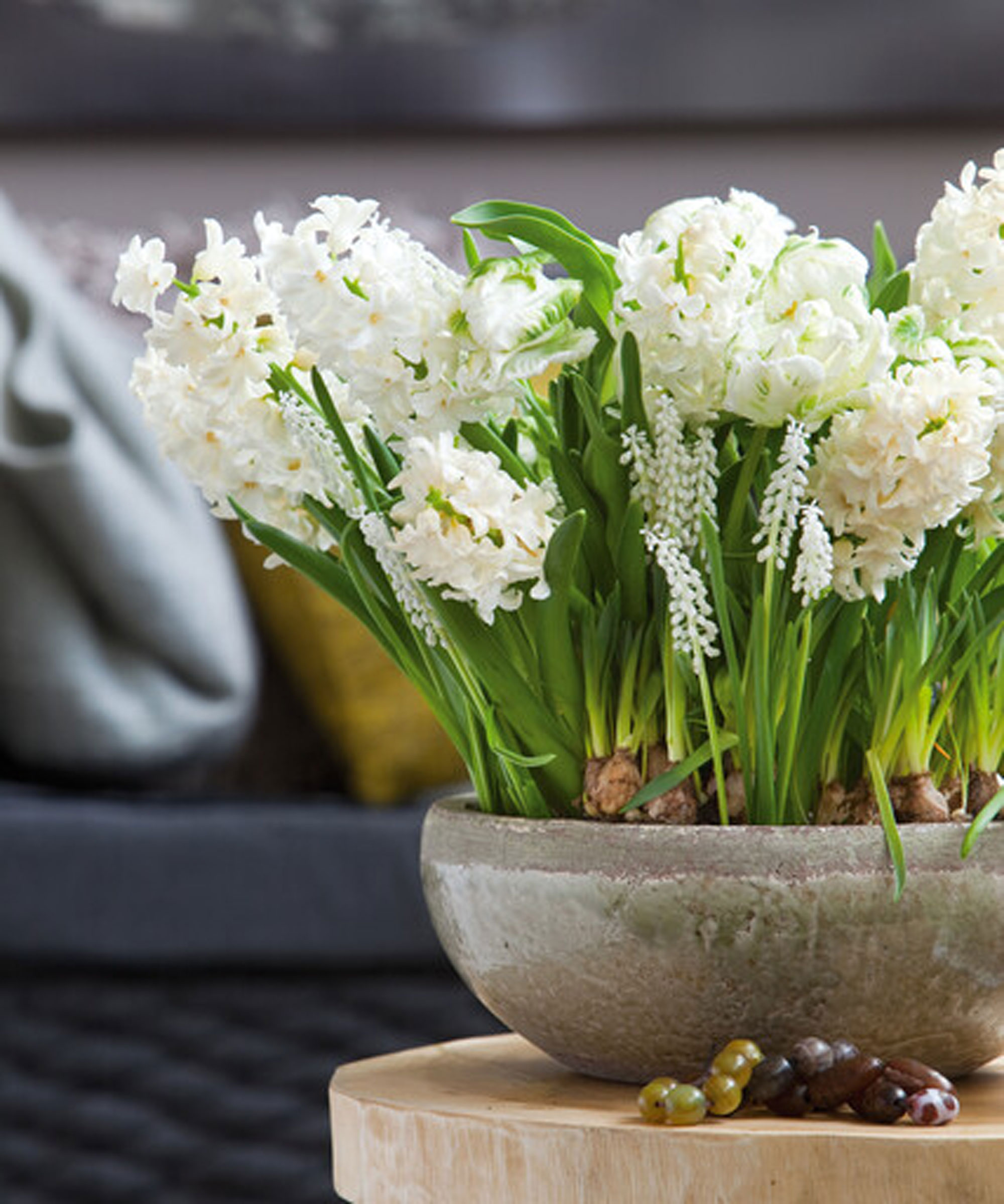
This petite variety of bulb is an old favorite, exploding into bloom with clusters of tiny bell-shaped flowers in shades of light and dark blue, white and occasionally pink, such as the 'Pink Sunrise' cultivar. Also known as grape hyacinth, it's easy to force these bulbs into early bloom indoors too.
Pot the bulbs in October as they need a cold period of at least ten weeks. Plant the bulbs in a shallow container in plenty of moist bulb or multipurpose compost, placing them about an inch apart with their pointy tips facing upwards. Then move them to a cool, dark area such as an unheated basement or well-ventilated crawlspace.
Check the bulbs occasionally and keep the compost moist. When you see shoots about 2 inches tall it's time to transfer the pot to a bright, cool area of your home in order to trigger flowering. Gradually move your bulbs towards a sunny windowsill. Continue to keep the soil moist. Once blooms appear, you can prolong their flowering period by keeping them out of direct sunlight.
Once the bulbs have finished flowering they can be planted out in the garden.
Can you grow indoor bulbs in water?

Yes, in addition to soil you can also grow indoor bulbs in water. There are two ways of doing this.
First you can use a glass vase that's specially designed for this. They have a rounded top that the bulb sits in, so its roots are initially suspended just above the water, then grow down into it.
Alternatively you can force bulbs in water by simply submerging the root zone. To do this use a tall glass vase or jar and fill the bottom with washed gravel or decorative pebbles to anchor the bulbs. Arrange the bulbs with the growing tips facing upwards. Only the bottom half of the bulb needs to be covered.
Either way requires keeping the water level topped up to supply the roots that are forming. As the roots grow, they will spread out under the stones. It will also hold the flower stems in place once they develop.
The good news is this method works for every one of our selection of 5 flowers to plant indoors now to bloom in time for Christmas.
Lifestyle journalist Sarah Wilson writes about garden design and landscaping trends. She has studied introductory garden and landscape design, and also has an RHS Level 2 qualification in the Principles of Plant Growth and Development. She is a regular contributor to Livingetc.com, and also writes for Homes & Gardens, Country Living, Country Homes & Interiors, and Modern Gardens magazines. Her first job was at Elle magazine, during which time a trip to the beautiful La Colombe d'Or in St-Paul-de-Vence led to an interest in writing about all things botanical. Later as lifestyle editor at Country Homes & Interiors magazine one of the highlights were the run of captivating country gardens that were featured.

